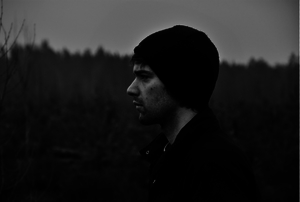A woman cradles a mobile under her chin as she sorts through dirty clothes at a laundromat. Her baby cries from his carrier as she pays at a kiosk – she nervously rocks him, wilting under the judgement of a girl using the next machine over. One frustrating call is followed by another frustrating call.
She struggles to load the carrier into her car. When her son stops crying, even for just a second, her relief is stark – but when she looks up he’s no longer there. Then she hears the screams: a boy calls for his vanished father and onlookers jolt as a car (with no apparent driver) crashes into another. She shouts for help but nothing works and the carrier remains empty. His name is Sam and he is gone.
This is how The Leftovers begins: with an event resembling nothing less than the Rapture itself. Anyone, at least at first, would be forgiven for thinking they’d stumbled on another adaptation of Left Behind, but on a second look the comparison falls apart. In Left Behind the Rapture is used to tell a story of geopolitics and world wars, but The Leftovers zooms in, to a nearly unbearable degree, on the wreckage left in individual lives.
The series orbits the Garvey family. There’s Kevin, the father, whose job as police chief involves keeping order between the townsfolk of Mapleton and the agitating members of a cult called the Guilty Remnant. Making things personal, his wife, Laurie, left him to join its ranks. They have two kids, Jill and Tommy, who react to global (and familial) chaos by shutting down emotionally or joining another cult altogether. Add to the mix Pastor Matt, who struggles with the implications the Sudden Departure (as it’s called in the show) has on his faith, and his sister Nora, whose husband and two children were among the departed.
Over the course of three seasons each character staggers through crises of faith and doubt, and questions of God’s existence, or how to deal with one’s powerlessness in the face of the inexplicable, are addressed with dignity, integrity and courage.
If you Google the series you’ll find, rather than the controversy or ridicule often greeting shows with religious themes, praise of a very high order. You’ll come across “Best of 2017” raves from publications ranging from Relevant to The New Yorker, and on scrolling through the links decade-best honours pop up from The Guardian along with all-time-canon nods from Vox and Rolling Stone.
This might come as a shock for viewers of faith used to, and thus expecting, being misunderstood or dismissed in major media. The Leftovers’ success can be said to fly in the face of a common narrative that assumes, more often than not, cultural resistance to these kinds of stories. Even the name of a recent American literary conference, “Trying To Say God,” acknowledges the struggle artists of faith have with evoking religious themes, avoiding a descent into kitsch, and being taken seriously as they do.
But, like any narrative, this doesn’t entirely address the situation at hand.
A closer look at recent years reveals major recognition for work that engages with themes of faith. Take the poem “The Antenna,” written by Anglican pastor Mia Anderson, which explores the paradoxes of prayer. Or Oscar-nominee Darren Aronofsky’s bizarre and psychological take on Noah. Not to mention the (unfortunately named) band Vampire Weekend’s (unfortunately named) album Modern Vampires of the City, which finds singer Ezra Koenig agonizing over his inability to completely leave behind a faith he’s claimed to have outgrown.
These three, respectively, took home the 2013 Montreal International Poetry Prize (the world’s most lucrative award for a single poem, then valued at $20,000), achieved blockbuster status (breaking some international records]), and landed the coveted honour of Best Album at Pitchfork, one of independent music’s most respected journals.
So what went right? Why did these examples, along with the The Leftovers, achieve mainstream success?
A large key to all this is that the show doesn’t settle on merely engaging with themes of faith, but also with those of doubt. The Leftovers approaches its characters not as we wish them to be, not as we think they should be, but as they are.
This may turn out to be distressing for viewers who approach art to be comforted, who want to follow protagonists who, like superheroes, inspire and comfort us with the type of moral fibre we ourselves don’t possess. But these well-rounded, fallible characters not only speak to the subtle and painful realities of processing spiritual events, they go on to provide representation – real representation – for people of faith. That doesn’t tend crop up all too often.
It could be said that some of the show’s characters of faith are judged quite harshly for their naivety and foolishness, or that they occupy the well-worn trope of people-behaving-badly, but their revolutionary nature is that, instead of them being judged or juxtaposed to wiser, more secular neighbours, they’re on the same boat as everyone else. Everyone is judged and revealed to be fallible, valuable, intolerable, non-repeatable. Everyone is united in confusion and smallness in the face of the unknown and everyone, faithful or otherwise, is given a place at the table. While this approach might be justifiably pinned as harsh, it’s also where the characters draw their power and integrity.
Certain viewers, ones who may have only ever been exposed to people of faith by means of tired stereotypes and misunderstandings, consequently have the opportunity to sit with them for three seasons and share in their experiences, struggles, doubts and triumphs. Folks across a cultural (and increasingly political) divide are encountered as people instead of labels.
Left Behind, along with other famous Christian franchises, offer straightforward plots with clear resolutions: people find faith in crisis, a war begins, Christ comes again, wrongs are put to right and everyone gets rewarded or punished. While tenets like the redemptive power of God or the struggle between good and evil are pillars of various religious traditions, even those of us who identify as people of faith struggle at times to position ourselves in the big picture. Religious art, and in particular the popular Christian art of the past few decades, often gets accused of providing easy resolution to infinite realities.
The Leftovers, on the other hand, explores what it means when closure or redemption seem distant from the reality of our lives. It wades into the deep waters of having to deal with moving on when you’re not ready to move on, or what we do when our personal world ends even as everything else goes on as it always has. It asks what to do with the holes departed loved ones leave in our lives. For viewers grappling with those same questions, the show’s courage in addressing them, its insistence in being present in suffering, brings a kind of comfort accessible to folks on any side of a political, cultural and spiritual divide. Suffering, often used to separate us, unites us in a deep solidarity of being, beneath it all, inescapably human. Oscar Wilde said that we might all of us be in the gutter, but we can still look up at the stars.
Convivium means living together. We welcome your voice to the conversation. Do you know someone who would enjoy this article? Send it to them now. Do you have a response to something we've published? Let us know!






